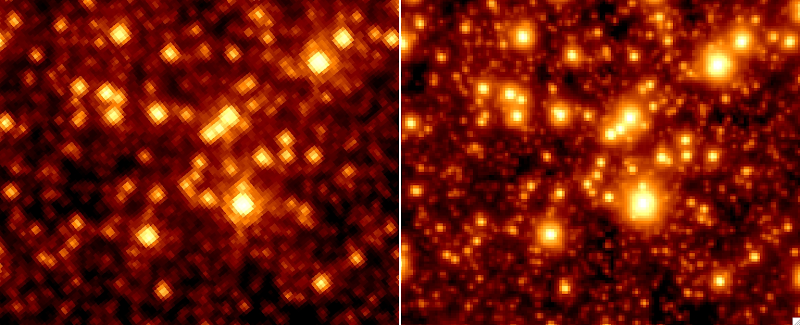
A central region of the globular cluster M92 at 1.6μm as observed with the Hubble Space Telescope (left) and the LBT in adaptive mode (right).
 This June Press Release (pdf) details some revolutionary test results from the LBT whose adaptive optics (correcting for atmospheric blur) are producing images sharper than those of the space based Hubble. These results put the LBT is on track to become the world's most powerful optical telescope.
This June Press Release (pdf) details some revolutionary test results from the LBT whose adaptive optics (correcting for atmospheric blur) are producing images sharper than those of the space based Hubble. These results put the LBT is on track to become the world's most powerful optical telescope.However, while the LBT's optics are to die for, its website is not (and that deficiency, more than anything else, probably accounts for why this breakthrough at the LBT isn't bigger news).

A double star as observed with the LBT in standard mode (left), and with the adaptive correction activated (right). Because of atmospheric blurring, the fainter companion of the star cannot be identified in the images taken in standard mode, while it is easily visible when the adaptive module is activated. A third faint star also becomes visible in the upper right part of the frame, thanks to the increased sensitivity of the telescope in adaptive mode.

















